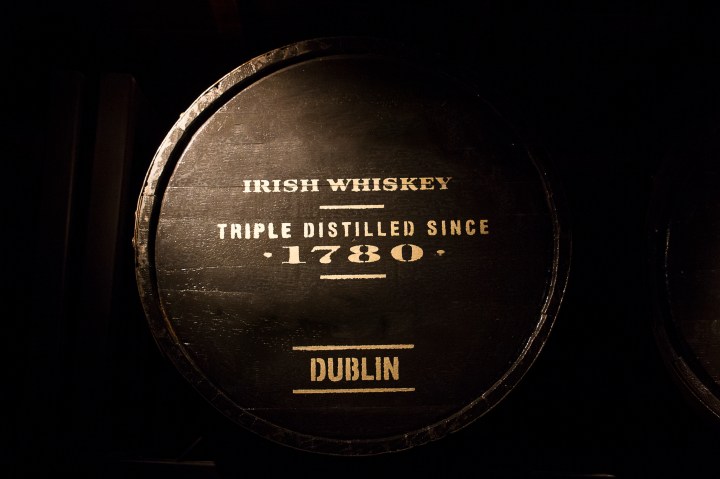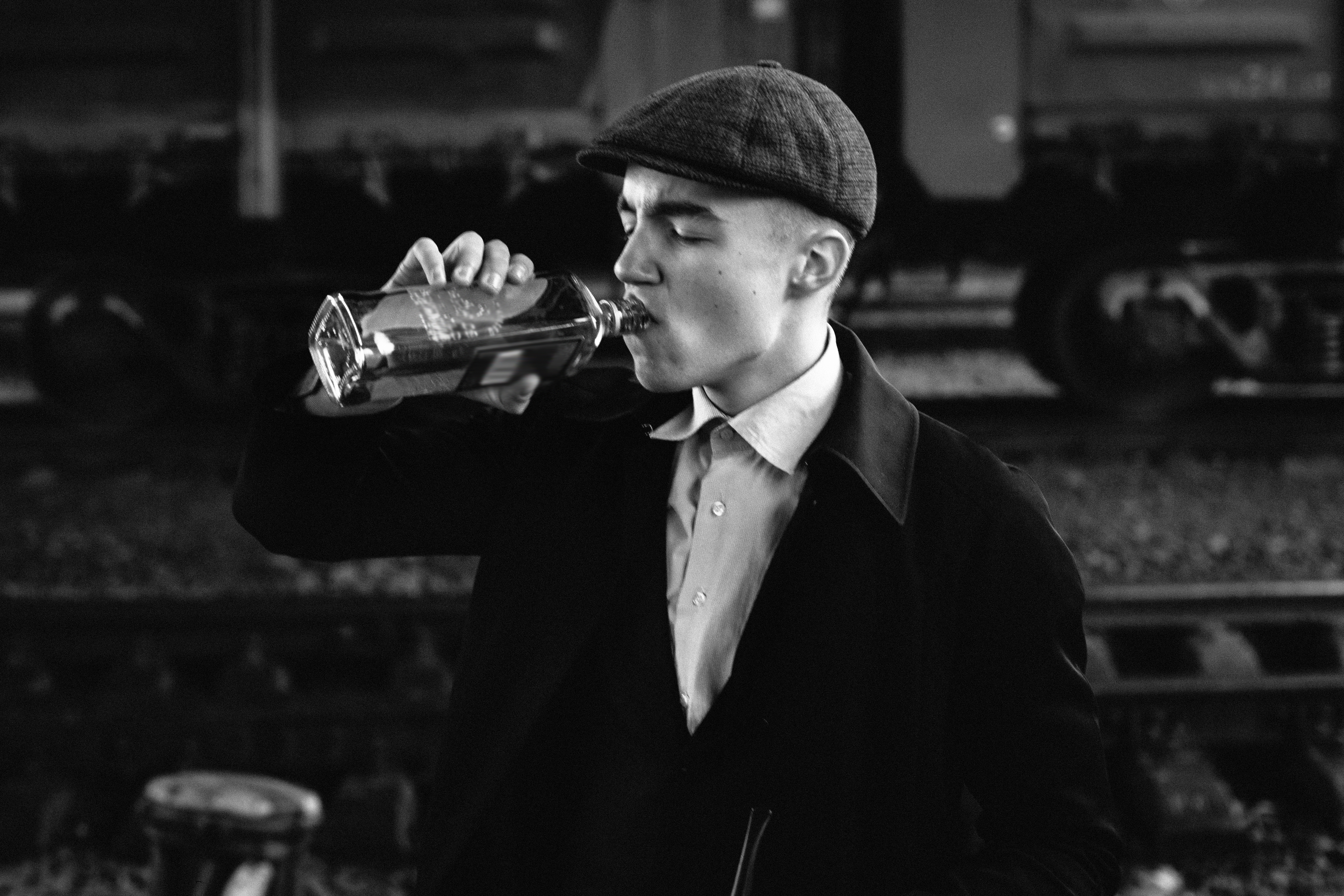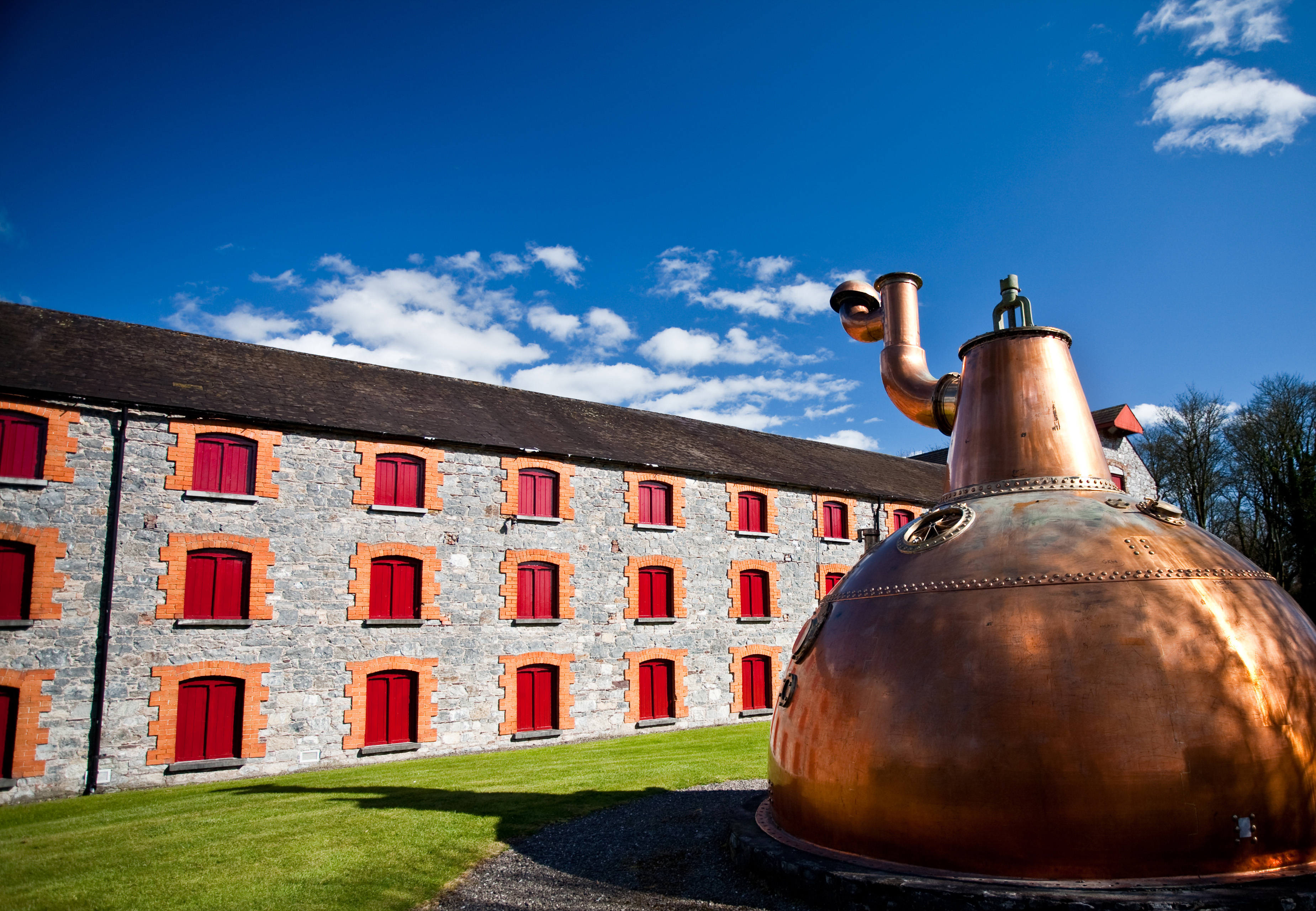TALKING IRISH
The whiskeys of Éire are flexing their muscles in the spirit world

It’s not only good for those Irish coffees that were all the rage in the Eighties. It’s a serious drink in its own right, it’s on the rise, and the world is paying attention.
It’s not only the E that marks the difference between whisky and whiskey. Leaving bourbon on that shelf over there, and talking only about whisky (Scotch) and whiskey (Irish), the key difference rests not in a letter of the alphabet, but in a number. And that number is three. (Interestingly, spelling an Irish whiskey without an E is permitted and there are instances of it.)
In the regulations of the respective countries, a true Scotch is required to be distilled twice, but Irish law requires triple distillation. Hence, when you see the words Irish Whiskey on a label, you will also find the words Triple Distilled. And there’s the (triple) rub: triple distillation is more of an Irish thing, and there is no choice in the matter: if you want to call it Irish on the label, it must have three goes at distillation.
Having said that, in all fairness this does not mean that your favourite whisky (Scotch) may not also have been triple distilled. But it will have had a minimum of two distillations, by law.
Those two numbers appear again in another regulation: an Irish whiskey must be aged in a wooden cask for a minimum of three years. This is required of a Scotch too. Bourbon, not that we’re really talking about bourbon here, requires only two distillations. But in all regions, you will find whisky, whiskey and bourbon which have had three, four or even more distillations. So if you are happier with only the higher numbers, just check the labels.
For my own personal taste, however, I’m more interested in maturity. And peat. A further distinction between whiskies Irish and Scotch is that peat is a far greater tradition in Scotch whisky than in Ireland, where the whiskeys are milder, and there is a growing trend for the milder style in the world today. There are many excellent Irish single malts, but they are not peaty. Many young (“new”) drinkers of either whisky or whiskey are veering towards the lighter styles. My own taste is for the peatier styles, and if you really want to impress me at Christmas time, it’s the bottle of peaty single malt under the tree that will make me happiest. (Do my family and friends even read this? Please nudge them if not.)
I found myself in an online whiskey (yes, Irish) tasting this week, which is an odd thing to do, mostly because drinking is a sociable thing. We look each other in the eye, clink glasses, raise elbows, tell stories, laugh and banter. We did manage some of the banter during an online tasting, but undoubtedly there’s a lot that you lose by not being in the same room.
Jazz, as Francois Adams of Halewood Artisanal Spirits is known by his friends and colleagues, led the tasting of two of their key brands, with his colleague Johann Herbst, and you’ll have started seeing them on the shelves by now: Samuel Gelston’s, and Peaky Blinder. And the first thing to dispel is that the latter, you might think, is a liquor spinoff of Peaky Blinders (note the added S), the TV series about the Irish gang in Birmingham who liked to sew razor blades into the peaks of their caps. (The show is set in the 1920s, by the way, which is much later than when the actual gang operated from the 1880s to the first decade of the 20th century.)

(Generic image: iStockphoto.com/Bogdan Kurylo)
It’s the gang that the whiskey is named after, not the show, and this is made clear in the brand’s legals: they may refer to the gang, but not the TV show. They may use photos of actual (long dead) Peaky Blinder gang members, but not of actors in the series. They may name cocktails after the original Peaky Blinder gangs, but not own a “Tommy cocktail”. And they may use images “that showcase the brand and era” but not “which recreate scenes from the show”. The handsome young man on the bottle’s sassy label is Stephen McHickie, photographed at 25 when he was charged with breaking into a draper’s shop.
The brand is produced and owned by Sadler’s, the Birmingham based purveyors of beers and spirits (since 1861). The Sadler family had dodgy connections with the Peaky Blinder gang back in the day, and they don’t mind owning up to it. The branding’s own marketing informs us that Peaky Blinders gang members would undoubtedly have visited Sadler’s pubs and that members of the Sadler family had connections with the infamous gang leader Billy Kimber. This makes perfect sense: of course they want to be associated with that edgy history and thereby lend their whiskey brand all that dark, hard but also cool cachét.
You may be puzzled, as I was, how a Birmingham based liquor company, Sadler’s, could produce an Irish whiskey which is called that on the label, which also boasts that it is triple distilled, as required by Irish law, and aged for three years to boot. So Irish Whiskey it is. The answer is simply that Sadler’s may be situated in the Black Country amid the old coal mines and foundries of the Industrial Revolution but it specialises in distributing artisanal spirits. The product is made entirely in Ireland, and only bottled in England by Sadler’s; and this is perfectly legal and approved of.
Like me, you’ve probably noticed that there are so many more Irish whiskey brands on the shelves now than there used to be. When my family toured Éire (not the north) in 1996 the most ubiquitous brands seemed to be Jameson (est. 1780), Powers (est. 1791), Tullamore DEW, Paddy and Bushmills, and of course others that were less mainstream. Bushmills is Ireland’s oldest distillery, established in 1708, and if you thought they only produced that ubiquitous bottle you see in every liquor store, you might like to know that they also have a lauded range of single malts including a 21-year-old.

Midleton Distillery in County Cork. (Image: iStockphoto.com/ferdinandas)
Teeling, all the rage now, opened as recently as 2012, and was the first distillery in Dublin in well over a century although the Teeling family had owned the older Cooley Distillery in the city. Teeling has quickly risen to prominence. But if you really want to impress, ask your friends if they’ve tried Redbreast, the County Cork whiskey that many locals will name as their favourite. Redbreast has a 12-year-old, but it’s the 21-year-old that has aficionados swooning and claiming it to be arguably the country’s best.
Other brands to look out for include Connemara (from John Teeling’s Cooley distillery which preceded Teelings), Writers Tears, Green Spot, Hyde, Knappogue Castle (est. 1996, the year of our visit), Midleton (Jameson, Redbreast and Green Spot all come from the Midleton Distillery established in County Cork in 1825), Slane, Glendalough, Egans, and Kilbeggan. And there are many more.
But it is this pair, Samuel Gelston’s and Peaky Blinder, that we were tasting. Missing was their other Irish star, The Pogues, because it was out of stock. It’s the official whiskey of the band, and perhaps ideally drunk at Christmas while listening to Fairytale of New York on repeat (if you’re aiming to get through the entire bottle with a friend or three).
Talking of which, good friends pitched up last Friday night with a bottle of Bob Dylan’s Heaven’s Door, a bourbon of note brought over by their LA friends. So maybe we are talking bourbon too. “We’re not leaving until this is finished,” we were warned. But when they started eyeing the Gelston’s and Peaky Blinder much later on, I had to explain that there was this tasting up ahead. It would have been an awful waste anyway. That on top of Bob’s bourbon and we might well have been knocking on Heaven’s door ourselves.
There is a slim connection between bourbon and Peaky Blinder (the whiskey). Peaky Blinder is aged in bourbon casks. This stems from bourbon casks only being allowed to be used once in America, which presents their owners with a problem (what to do with them) and a solution (sell them to others who would like to age their own whiskies in them).
Like an actual Peaky Blinder gang member, the whiskey is bold and smooth, and well-dressed to boot in that snazzy bottle. I picked up three things on first taste of Peaky Blinder: orange peel, vanilla, and cinnamon. Samuel Gelston’s is so much paler, and its bottle so different, that you could easily mistake it for tequila, because that’s really what the bottle looks like.
It’s the now-you-see-it, now-you-don’t brand of Irish whiskey, the Gelston’s distillery having a very long history but a chequered one. Jazz likened it to somebody buying a dilapidated old wine farm that hasn’t produced wine in many years, reviving it, and starting up a new wine operation using the old name. That’s the Gelston’s story, in brief.
It had begun as Gelston’s Old Irish Whiskey in Belfast in 1830, and in 1869 one Harry Neill purchased it on Samuel’s death. He’d been in Australia since 1851 – not prospecting for gold but trading in provisions for those who were – and had returned with a fortune. There appears to have been a rocky road in the intervening decades but the Neill clan own the brand today and it is back with a bang.
I found it spicy and honeyed with a notable nuttiness, an easy drinker compared with the greater punch of Peaky Blinder. Which, I cannot tell a lie, is my preference of the two. Did they match up to Bob’s bourbon? That’s another story I’m not telling. DM/TGIFood
Tony Jackman is regional Vodacom Journalist of the Year (Lifestyle) Eastern Cape for 2022 and Galliova Food Champion 2021.
Follow Tony Jackman on Instagram @tony_jackman_cooks. Share your versions of his recipes with him on Instagram and he’ll see them and respond.
SUBSCRIBE to TGIFood here. Also visit the TGIFood platform, a repository of all of our food writing.





Comments - Please login in order to comment.